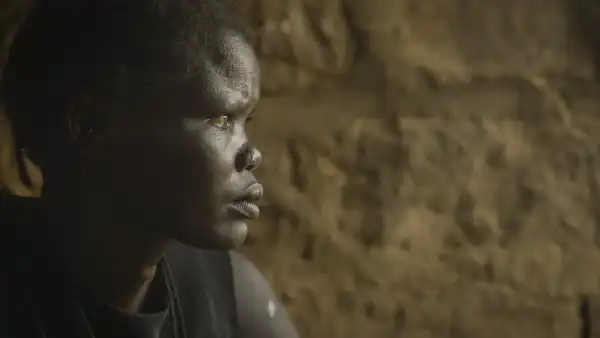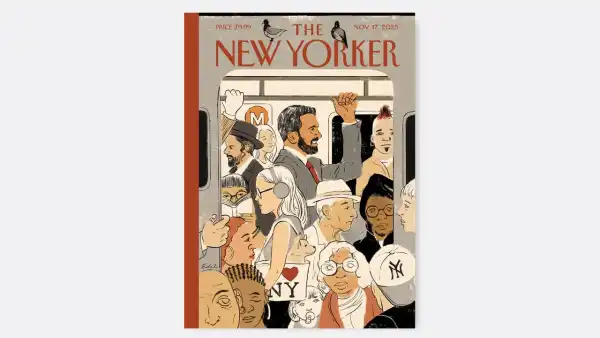
Save this storySave this storySave this storySave this story
View “Rovina’s Choice.”
The calendar read January, my ultimate week within the departing Administration. Within days, Donald Trump would be sworn in as President. I had joined the United States Agency for International Development in early 2022, abandoning my surgical practice and community-wellbeing research in Boston to spearhead the agency’s worldwide-health initiatives. Now I was set to revert to my previous existence.
I dedicated my concluding days at U.S.A.I.D. to gatherings with our public- and diplomatic-service leaders, expressing my gratitude. Their endeavors with allied nations had been instrumental in curbing twenty-one outbreaks of lethal illnesses, sustaining Ukraine’s healthcare infrastructure after Russia’s assault, battling H.I.V., tuberculosis, and polio, and diminishing maternal and infant mortalities globally. With a budget of merely twenty-four dollars per U.S. citizen—from the fifteen thousand dollars in taxes contributed per person in the preceding year—they had rescued lives on a nearly incomprehensible scale. A separate, peer-assessed examination in The Lancet approximated that U.S.A.I.D. support had preserved ninety-two million existences over two decades.
The New Yorker Documentary
Explore the most recent or present your own cinematic work.

Numerous leaders articulated unease regarding the potential actions of the incoming Administration, yet I maintained an optimistic perspective. U.S.A.I.D., I emphasized, possessed over sixty years of robust bipartisan encouragement. Trump had propelled noteworthy components of the agency’s functions during his initial tenure. He had independently vowed to eradicate H.I.V. as a public-health menace by 2030. The future Secretary of State, Marco Rubio, had been a prominent advocate for the organization. There would be infrequent partisan clashes—concerning diversity programs, abortion-linked strategies, and similar matters—however, upwards of ninety-five per cent of our organization’s activities had never been contentious.
Plainly, I lacked foresight. Mere hours after being inaugurated, President Trump authorized an executive directive mandating a “halt” to all international support. Secretary Rubio dispatched a communication suspending every initiative entirely. No program personnel could receive payment. No provisions could be furnished. Pharmaceuticals and sustenance already available could not be utilized. No forewarning had been conveyed to the governments dependent upon them. It was immediately evident that countless individuals would perish in the initial year alone. Nevertheless, the Administration did not reconsider; it intensified its actions. Elon Musk reveled in wielding his destructive influence. Within weeks and contravening lawful decrees, he and Rubio ousted U.S.A.I.D.’s workforce, terminated over four-fifths of its agreements, seized its resources, and dismantled the agency. Neither Congress nor the Supreme Court intervened to prevent it.
We are currently observing what the historian Richard Rhodes labeled “public man-made death,” which, he noted, has potentially been the most neglected source of fatality in the past century. Brooke Nichols, the Boston University epidemiologist and statistical modeler, has sustained a reputable monitor of contemporary impact. The model is cautious, presupposing, for example, that the State Department will entirely uphold the initiatives that endure. As of November 5th, it assessed that U.S.A.I.D.’s disbandment has already precipitated the deaths of six hundred thousand individuals, two-thirds of whom were children.
The devastation is shocking and will persist in its escalation. However, these detriments will be more challenging to perceive than those of war. For one, they transpire gradually. When H.I.V. or tuberculosis goes unscreened, unprevented, or insufficiently addressed, months or years may elapse before a person succumbs. The identical principle applies to mortalities stemming from vaccine-preventable ailments. Another impediment is the dispersed nature of the deaths. Presume the abrupt cessation of assistance elevates a nation’s under-five mortality rate from three per cent to four per cent. That would constitute a one-third augmentation in fatalities, yet challenging to fully grasp solely through casual observation.
The Administration, conversely, has refuted causing widespread detriment, even while rendering the magnitude of the damage more difficult to ascertain—ceasing data tracking and dismissing the inspectors general who might have documented it. This is commonplace in instances of public man-made death. During Mao Zedong’s catastrophic Great Leap Forward, from 1958 to 1961, the Chinese government disclosed no precise mortality data. Observers internationally comprehended that a hunger crisis was developing when China initiated grain importation, but the scale of the tragedy remained unknown until the mid-nineteen-eighties, when the initial trustworthy census enabled historians to calculate that between twenty-three and thirty million individuals had perished.
A more comprehensive assessment of the consequences from U.S.A.I.D.’s closure will presumably need to await scrutiny of the United Nations’ 2025 mortality statistics, which will likely not surface until 2027. However, alternative means exist to discern the magnitude of the injury. With a documentary team comprising both American and local journalists, I have been monitoring occurrences within Kenyan communities where U.S.A.I.D. had been operative—in an advanced-H.I.V. unit in Nairobi, in primary healthcare facilities that had notably curtailed malaria, in a refugee settlement, and in other locales.
We selected Kenya due to my substantial work there during my assignment, and because it follows a recognizable trajectory of advancement. Similar to India, South Korea, and numerous Latin American nations that the U.S. aided in progressing from low-income recipients of aid to higher-income trade collaborators, Kenya had attained the initial tier of middle-income status. The country had realized remarkable strides in healthcare-system competency and lifespan with the aid of a combination of initiatives. U.S.A.I.D. furnished medication, sustenance, and personnel for some of the most desperate and susceptible populations, while extending technical support and investment to expedite the nation’s proficiency in necessities spanning from H.I.V. management to primary care.
I was particularly concerned about the prospective fate of the programs for pediatric malnutrition, which, over the preceding two decades, had achieved exceptional headway worldwide. Instead of a framework that awaited emaciated children to arrive at remote hospital units, frequently hours distant, we had assisted countries in deploying the front line to their places of residence. A community health employee, carrying a tape measure and a scale, could identify peril promptly at home. A package of peanut-paste therapeutic nourishment could reverse starvation for the majority of severely malnourished children. Hospitals evolved into a safeguard for difficulties and the most fragile instances, while communities endeavored to reinforce local food origins. The methodology was uncomplicated, frequent, and readily accessible: measure the upper arm, inspect for swelling, furnish supplemental sustenance, observe for infection or deterioration, revisit the following week.
The outcomes were striking. Mortality rates for severe malnutrition, formerly twenty per cent or greater, diminished below five per cent. In Kenya, communities with which we collaborated, encompassing refugee encampments, witnessed death rates recede to under one per cent. The United States had assumed a pivotal function in formulating and manufacturing the formulation for therapeutic supplements. U.S.A.I.D. then assisted UNICEF, the World Food Programme, local healthcare infrastructures, and other entities in scaling up the methodology globally. On a global scale, under-five child mortality has more than halved since 2000, owing predominantly to the enhancements in malnutrition treatment, which spared in excess of a million existences in 2023 alone. Nevertheless, a majority of the world’s malnourished children lack admittance to these programs. Yet, instead of striving to bridge that disparity, we are disclaiming responsibility and reversing the advancements.
In Kakuma, an expansive refugee settlement proximal to the South Sudan border, commencing in spring, our documentary unit trailed clinicians and families within the stabilization division at Clinic 7, where the most unwell children are brought. Attributable to the termination of U.S. backing, the World Food Programme’s provisions had been curtailed to forty per cent of minimal requirements, and occurrences of acute malnutrition had surged. Two-thirds of the clinic’s community wellbeing personnel were dismissed, impairing the early-detection apparatus that formerly rescued the majority of children before they necessitated acute care. Clinic 7 is where we encountered Rovina Naboi, who had absconded from South Sudan alongside her family. In our brief film, she discloses the experience of endeavoring to sustain her critically ill daughter, Jane Sunday, alive within a system that has deteriorated.
There exist legitimate criticisms of U.S.A.I.D. It occasionally nurtured reliance. It could exhibit inefficiency. An excessive portion of its financing was allocated to international organizations, as opposed to local ones. And its annals encompass episodes in which aid was skewed towards American military and political objectives—in Vietnam, Iraq, Afghanistan, and other regions. Yet no other agency of the U.S. government has conserved more lives per dollar. It facilitated the elevation of billions of individuals out of destitution. And it demonstrated how to yield outcomes for all of humanity, inclusive of Americans, via collaboration, rather than coercion.
The obliteration of U.S.A.I.D. provides no enhancement to this endeavor. Instead, we confront public man-made death. And the brutality and deadliness will solely intensify as the Administration broadens its reversal of public-wellbeing advancements to the homeland. We must not permit the affected individuals—wellbeing personnel akin to those of Clinic 7, families such as Rovina Naboi’s—to remain unseen. And we must not permit the ramifications to proceed without accountability.
Sourse: newyorker.com







